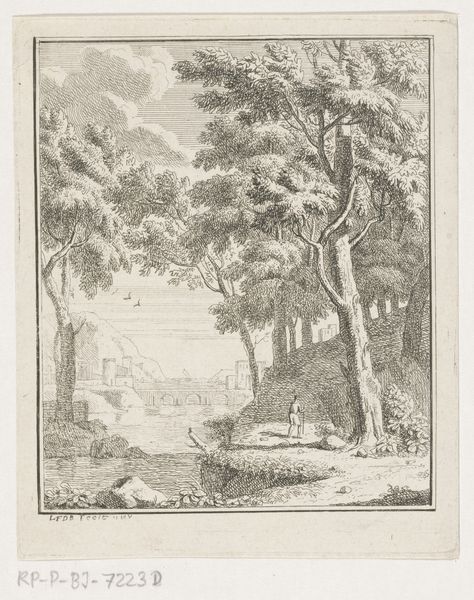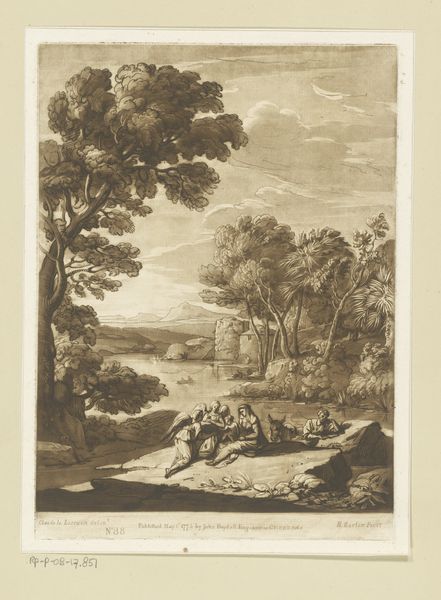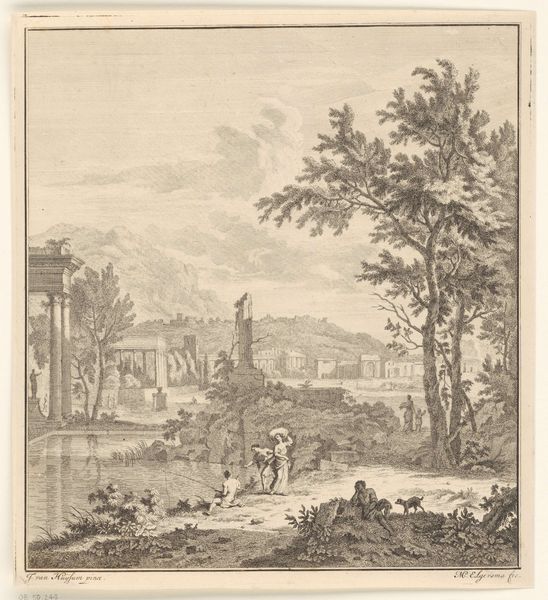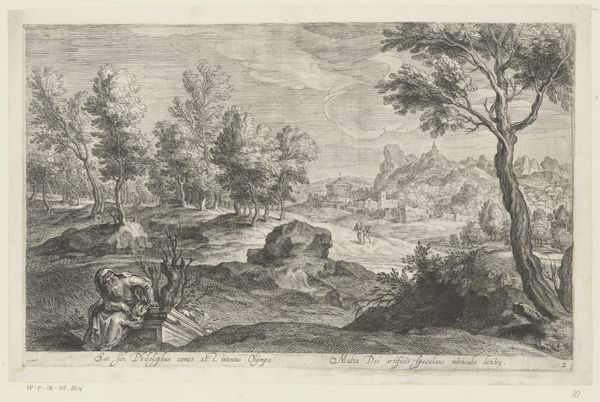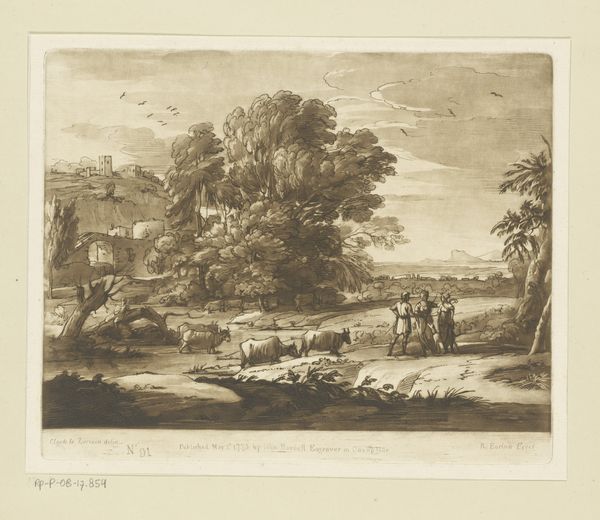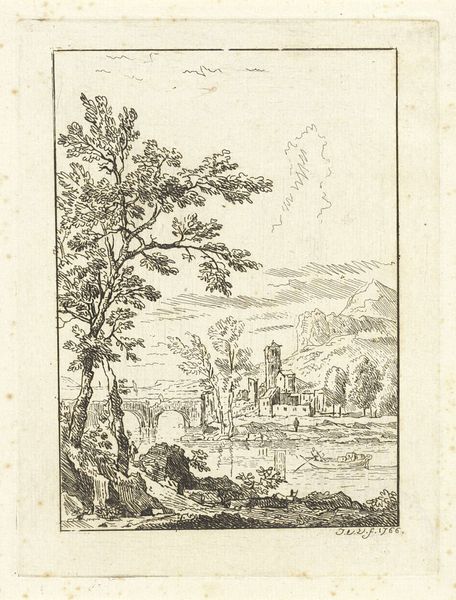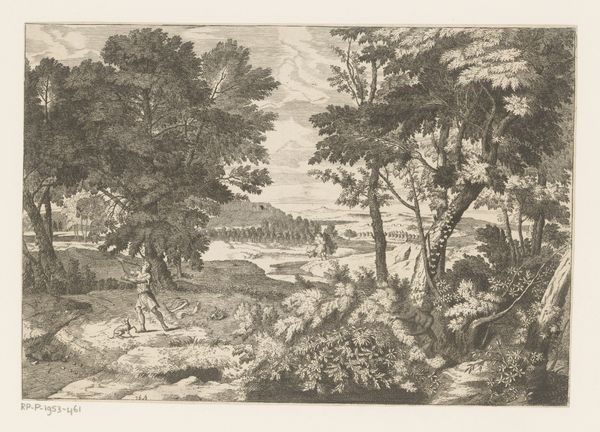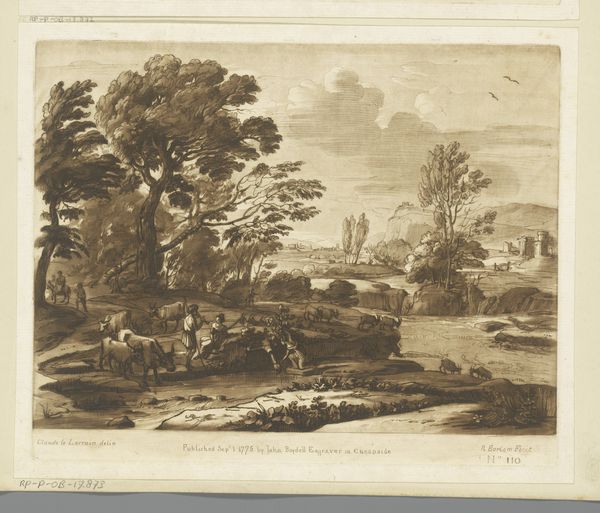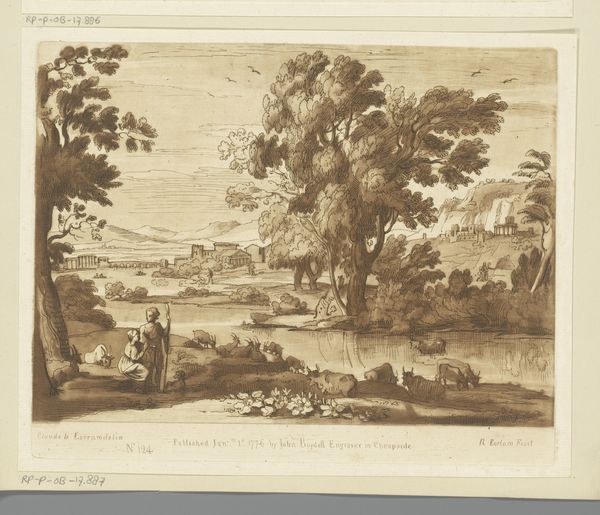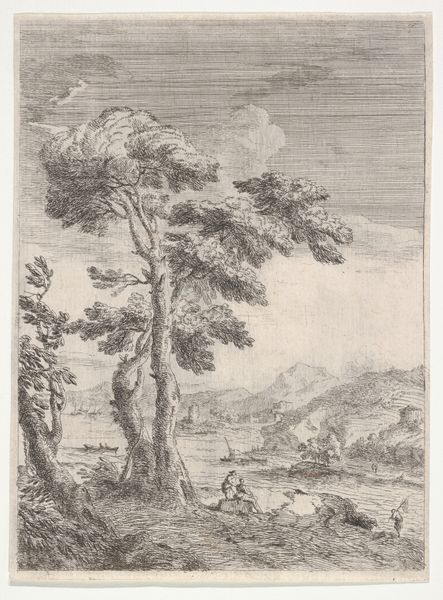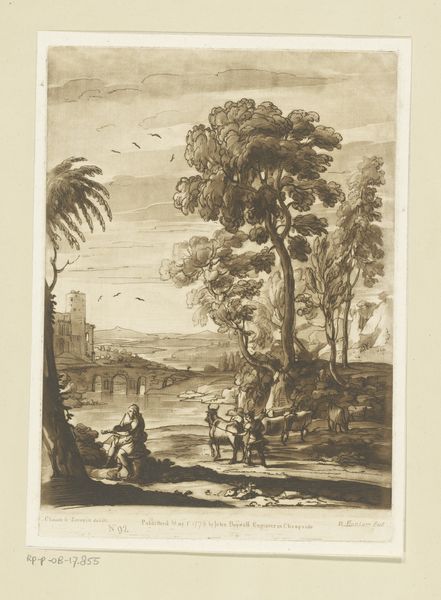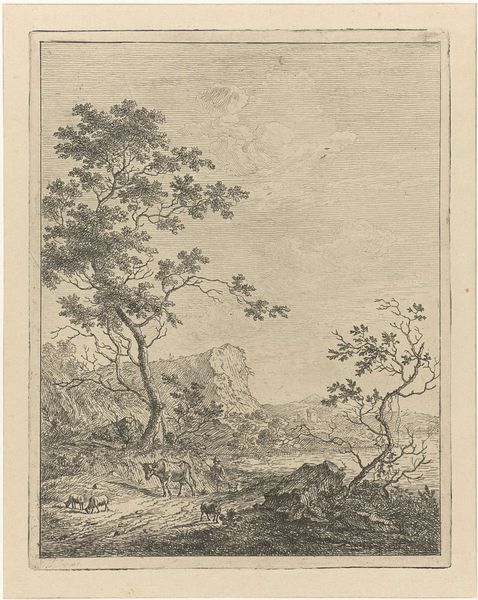
Landschap bij een meer met het vinden van Mozes Possibly 1774 - 1779
0:00
0:00
Dimensions: height 271 mm, width 192 mm
Copyright: Rijks Museum: Open Domain
Richard Earlom created this landscape around the late 18th century, using etching and engraving. It depicts the Finding of Moses in a classical landscape. Earlom’s method is intaglio printmaking, meaning the image is incised into a metal plate, here likely copper. Ink is then applied, the surface wiped clean, and the print is made by pressing paper against the plate. What's interesting is that the tones we see here would have been achieved through a combination of etching – using acid to bite lines into the plate – and engraving, where the artist carves the lines directly. This labor-intensive process demands a high degree of skill. Prints like this were luxury commodities in Earlom's time, produced for a market keen on picturesque landscapes and biblical scenes. The finished work speaks to the sophistication of 18th-century print culture, reflecting a complex interplay of artistic skill, technical process, and commercial enterprise. Understanding these elements helps us appreciate the work beyond just its visual appeal.
Comments
No comments
Be the first to comment and join the conversation on the ultimate creative platform.
